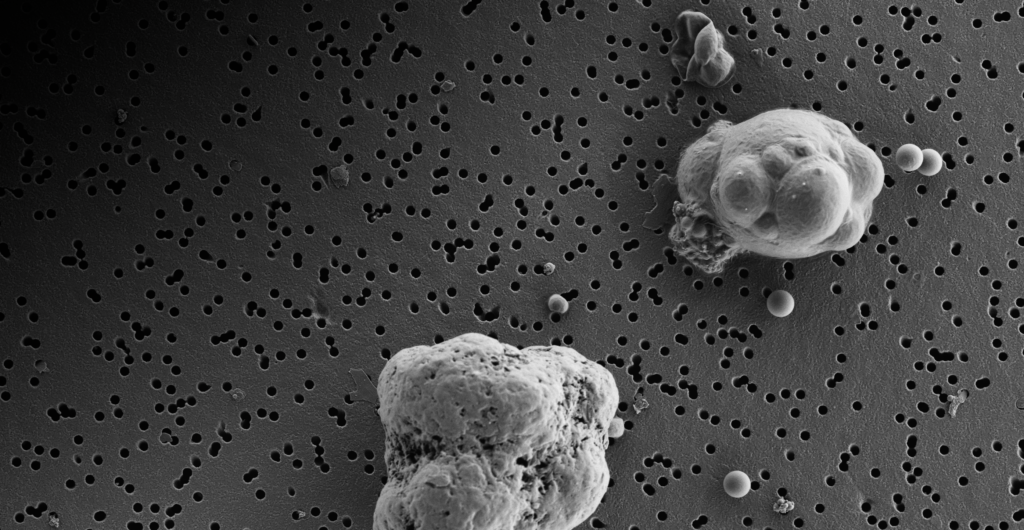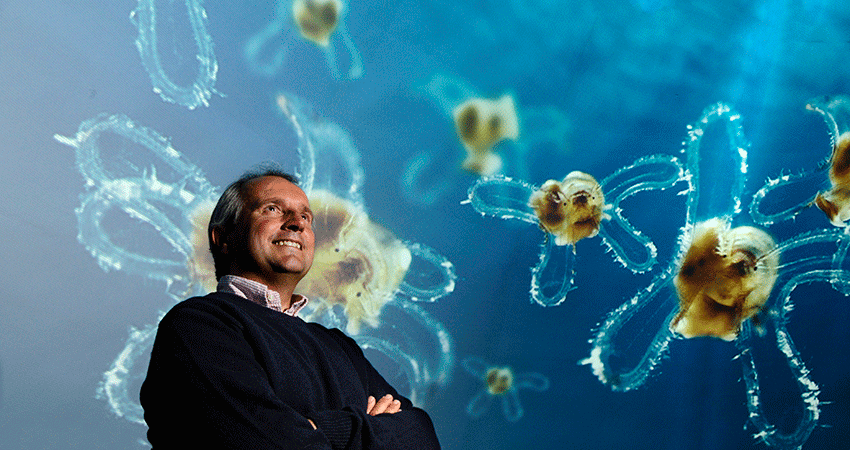June 8, 2021 marks World Ocean Day. About 71 percent of the Earth’s surface is (salt) water-covered, and the oceans hold about 96.5 percent of all Earth’s water. Time to appreciate the unique value of our oceans.
Ocean currents govern the world’s weather and create a kaleidoscope of life. Humans depend on these crowded waters for comfort and survival, but global warming and overfishing threaten Earth’s largest habitat.
The oceans are home to millions of Earth’s plants and animals—from tiny single-celled organisms to the giant blue whale, the planet’s largest living animal. Life in the ocean depends on phytoplankton, mostly microscopic organisms that float at the surface and, through photosynthesis, produce about half of the world’s oxygen.
Microscopes play a crucial role in making these organisms visible and helping to understand the complex networks behind them. Below we highlight researchers, microscopy images and ZEISS solutions that celebrate marine discovery and push for solutions to saving our oceans.
Understanding the Deep Sea

The marine researcher, microbiologist and deep sea explorer Professor Antje Boetius looks back to a highlight of her career: “I will never forget the moment I made a discovery about microorganisms that wasn’t understood, looking through the microscope discovering two types of microbes that interact to consume methane. It was such a special moment.”
However, she finds that her work is much more than just exploring, describing and admiring. There are so many changes that humans have inflicted on the oceans. As an eyewitness to these changes, she wants to provide solutions for a better future.
Read the interview with Professor Boetius for the series “ZEISS Beyond Talks” and learn more about the deep sea and our impact on the ocean.
Microplastics and Nanoplastics
Microscopes also bring to our attention what naturally doesn’t belong into the ocean – above all: plastics from a variety of sources. Most plastics in the ocean break up into very small particles, so called microplastics – particles with a size of 5 millimeters or smaller, and nanoplastics (1 µm or smaller). Microscopy plays a crucial role in finding and identifying these micro and nanoplastic particles and correlating their physical and chemical properties at particle levels.

Sample courtesy of F. Vollnhals, INAM, Forchheim, Germany.
Discover imaging solutions for microplastics and nanoplastics analysis.
Stunning Images
Many scientists worldwide study the oceans and marine life with the help of microscopes. Enjoy some images of microscopic marine animals from our social media channels:
The Secret World of Plankton

The passion of marine scientist Dr. Richard Kirby is to bring the secret world of plankton nearer to us all. For excellent footage of plankton, visit marine scientist Dr. Richard Kirby’s website and @PlanktonPundit Twitter account.
Read more on how he uses ZEISS microscopes to reveal the hidden world of plankton.
Be a part of it!
For 2021, World Ocean Day is raising awareness and support for the global movement to protect at least 30% of the world’s lands, waters, and oceans by 2030. Safeguarding at least 30% through a network of highly protected areas can help ensure a healthy ocean and climate.





